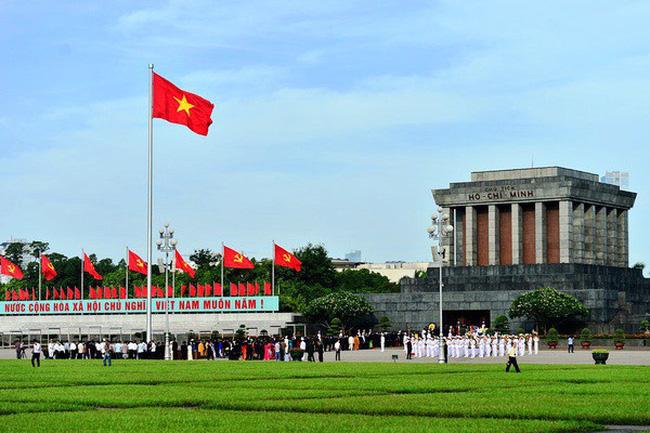After a great victory on 30 April, 1975, under the leadership of the Communist Party of Vietnam, the Vietnamese people immediately started the task of rebuilding from the consequences of the war and restoring the economy. On the basis of practical summarization, at the 6th National Congress (December 1986), the Communist Party of Vietnam initiated and led the people to implement Renovation work and to open an important turning point in national construction and defense. Over nearly 35 years of implementing Renovation policy of the Communist Party of Vietnam (1986 – 2020), Vietnam has notched many achievements of great historical significance, specifically:
Size and potential of the economy has been enhanced. From being one of the poorest countries in the world, Vietnam is now one of the most dynamic emerging countries in Southeast Asia and the world. Economic structure has positively progressed in the direction of industrialization and modernization, combining production with the market. Macro economy is stable, maintaining a fair growth rate for many decades. In the period of 2010-2020, economic growth of Vietnam reached an average of 6.31 percent per annum, with GDP growth in 2019 reaching 7.02 percent, which made it among the fastest growing economies in Southeast Asia and the world. And in 2020, despite being impacted and severely affected by the COVID-19 pandemic, according to the World Bank (WB), Vietnamese GDP growth is estimated to increase by 3-4 percent.
By 2019, Foreign Direct Investment (FDI) in the country reached US$362 billion with nearly 40,000 projects from 132 countries and territories. Import and export has increased continuously from 1986 to 2020, with the import-export turnover in 2019 reaching US$190 billion. From a situation of regular trade deficit, Vietnam has turned to a nation with a trade surplus of $10 billion in 2019. Vietnamese products are present in more than 200 countries and territories in almost every continent.
Under the proper leadership of the Communist Party of Vietnam, Vietnam is increasingly and more comprehensively integrating into the regional and global economy. The country has signed 16 Free Trade Agreements, including many ‘new generation’ agreements such as the Comprehensive and Progressive Agreement for Trans-Pacific Partnership (CPTPP) effective since January 2019 and the European Union Vietnam Free Trade Agreement (EVFTA) effective since 1 August 2020 with higher and broader commitments. EVFTA is the first agreement of the EU with developing countries in Asia, paving the way for a tariff reduction of 99 percent on goods between Vietnam and the EU.
Along with economic development, Vietnam has consistently invested in all resources for development in all aspects of the socio-cultural field; always paid attention to effectively resolving the relationship between economic growth and cultural development, and in the implementation of social advancement and justice. The annual per capita income which in 1986 was only around $86 reached $2,800 in 2019, a 32.5 fold increase in over three decades. In the process, Vietnam has gone from being a low-income country to becoming a developing country with an average income. Vietnam is considered as a country with positive achievement in poverty reduction and in realizing the United Nations Millennium Development Goals (MDGs). In 1975, at the end of the war, more than 70 percent of Vietnamese population lived below the poverty line, but by the end of 2019, the poverty rate in Vietnam was only about 4 percent. The Human Development Index (HDI) has steadily and continuously increased over the past few decades; in 2019, it was 0.63, ranked 118/119 countries, just increasing 0.007 points to enter the group of countries with high Human Development Index. Especially in the first six months of 2020, in the context of outbreak and global spreading of the COVID-19 pandemic.
On 17 August, when the global infected numbers stood at 21,837,088, and the number of fatalities was 773,198, Vietnam has well-managed, prevented and controlled the spread of epidemic, with only 964 infected cases, 456 recovered cases and 24 fatalities. In spite of difficult economic conditions, the Government of Vietnam has provided quarantine facilities and isolation conditions for all those who have or are suspected of contact with infected people; self-researched and successfully manufactured test instruments and exported to America and Europe.
With the guiding spirit of Prime Minister Nguyen Xuan Phuc who said, “Resisting the pandemic is like fighting the enemy”, Vietnam has actively responded to the COVID-19 pandemic outbreak even before recognizing the first case of infection. According to the Financial Times, “Vietnam has demonstrated its disease control model in a country with a limited resource but a determined leadership”.
Vietnam has maintained its socio-economic stability over the past decades. Favorable business investment environment and free trade agreements between Vietnam and other countries in the world are expected to increase foreign investment capital, including investments from the Middle East and African countries into Vietnam.

















